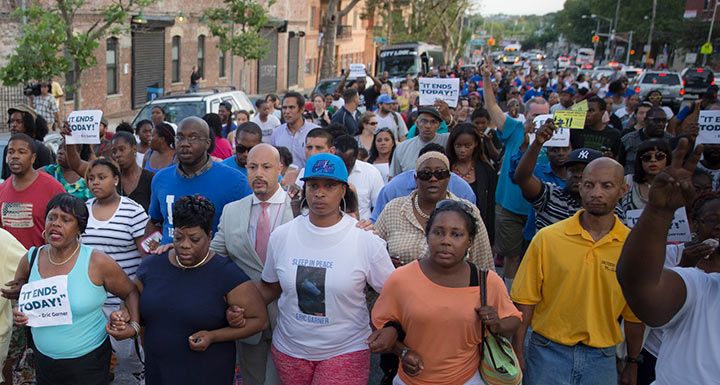
The tragedy in Ferguson is not an aberration
NEW YORK — His name was Michael Brown, he was 18, did not carry weapons, was black. Five minutes past noon on a warm Aug. 9, as Brown walked to his grandmother’s home, Darrell Wilson, a 28-year-old white policeman, shot him six times, killing him.
No need to go into further details. Almost two weeks have elapsed and much has been said about the tragedy in Ferguson, Mo., a city with a 70-percent black population and a 53-member police department, 50 of whom are white.
Yet after two white policemen shot and killed another young African-American on Tuesday in a St. Louis neighborhood, very close to Ferguson, racial tensions were inflamed again at a time when authorities were attempting to quell the protests over the killing of Michael Brown.
Angry residents accused the police of excessive force. The name of the new victim, who according to the authorities threatened them with a knife, has not been revealed.
The new tragedy takes place after two nights of confrontations with the local police and the National Guard marked by gunshots, tear gas and generalized confusion during which 78 people were arrested.
In New York, a city still shaken by the unjustifiable death last month of Eric Garner, a 43-year-old African-American, at the hands of the police, Michael Brown’s tragedy has resounded with great force. A march has been scheduled for next Saturday (Aug. 23), which is expected to bring together thousands of people demanding an end to impunity, justice for Garner, Brown and all others who have died at the hands of official violence, as well as zero tolerance for police brutality.
Organized by activist Al Sharpton, the NAACP and the health-care workers’ and teachers’ unions, the march will proceed to the place in Staten Island where Garner died.
The tragic incident at Ferguson has shaken the country like a violent slap and contains elements that nobody — Latinos even less — can afford to ignore.
The National Day Laborer Organizing Network (NDLON), a national association based in Los Angeles, called Latinos to join the protests in Ferguson.
“As a movement that combats criminalization to stop the deportations and detentions, we Latinos and immigrants have the duty to side with those who have spent more time struggling. On the streets of Ferguson, the courage of the people has sounded an alarm over the crisis of violence that besieges the black community,” the organization stated.
“As we defend our families, we must also respond to that call, not simply out of solidarity but also because the problems that our communities face and the solutions we seek are linked.”
Michael was no saint, as shown by the video released by the police with the obvious intention of deflecting from its own gratuitous deadly violence. The video seems to show him intimidating the clerk at a gas-station store and taking a pack of cigarettes without paying for them, 20 minutes before his death.
Thomas Jackson, Ferguson police chief, admitted that the officer who fired on Brown didn’t even know that the theft had occurred, so that incident was not connected to the young man’s death.
But even if it had been, when did death become an appropriate punishment for the theft of a pack of cigarettes?
“He was stopped because he and his friend were walking on the middle of the street, obstructing traffic,” Jackson admitted.
Ferguson is a city of 21,000 residents and at that time the streets were empty. So, why was police intervention necessary? No doubt about it, no unarmed person deserves to be shot for walking on the middle of the street or even for tussling with a policeman.
It is a terrible irony that the police left Michael’s lifeless body lying for hours on the same street on which he had earlier walked, provoking the wrath of the white officer who killed him.
Of course, the Ferguson tragedy is not an isolated case. The crisis of violence that afflicts the black community, referred to by NDLON, is an awful reality.
According to a recent FBI report, which the Bureau describes as incomplete, a white policeman killed a black person almost twice a week in the U.S. between 2005 and 2012. The report shows that 18 percent of the Afro-Americans killed during those years were under the age of 21, compared with 8.7 percent of white victims.
No, the tragedy in Ferguson is not an aberration, a fact understood by the young Latinos of United We Dream, the country’s largest network of Dreamers.
“It is important to remember that Michael Brown’s death is a symptom of a much deeper problem. Many of our laws and law-enforcement officers are profoundly racist and don’t value the lives of people of color,” said Felipe Sousa-Rodríguez, one of the group’s leaders. “Our communities are our struggles are linked and suffer from the same injustice.”
Solidarity is the watchword.


